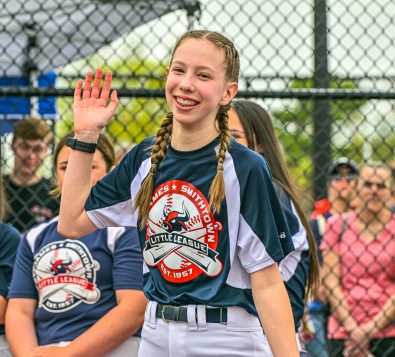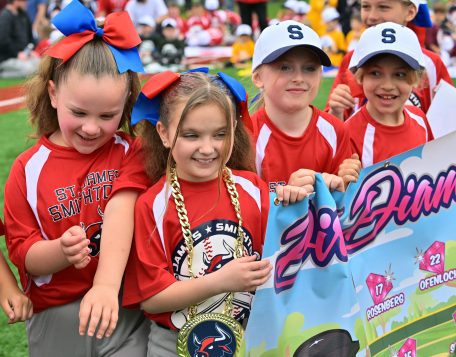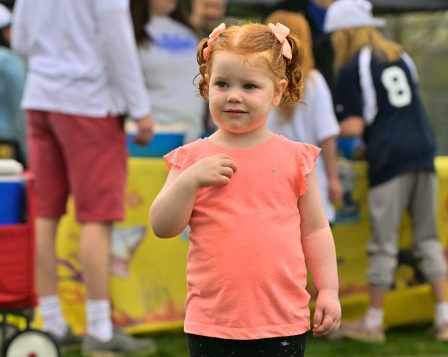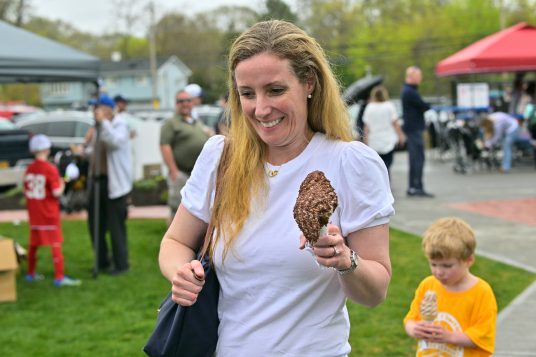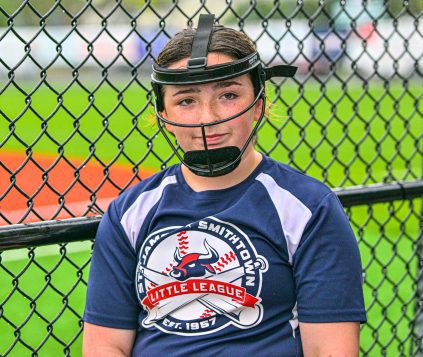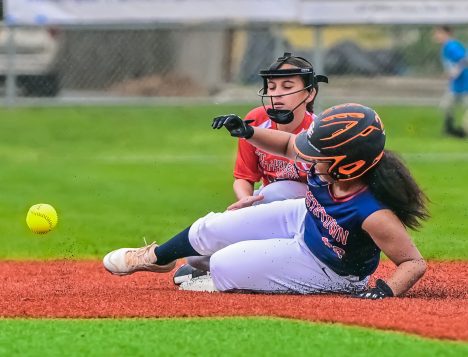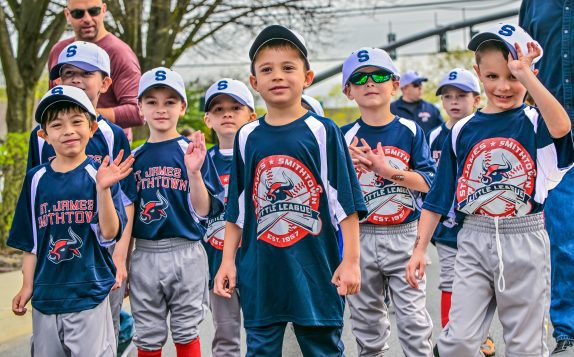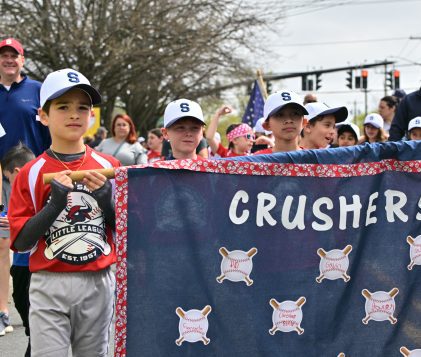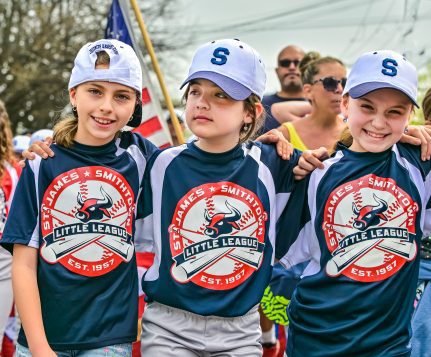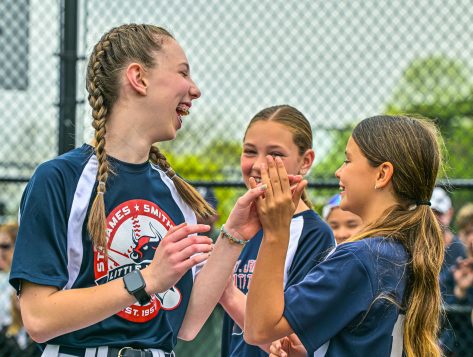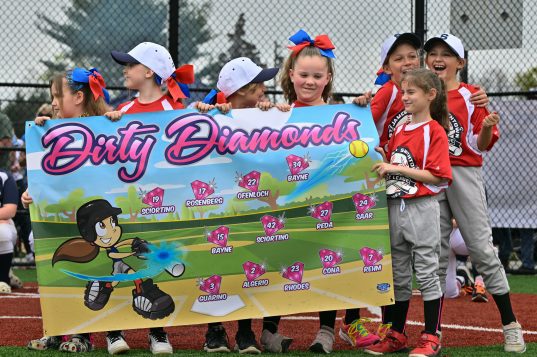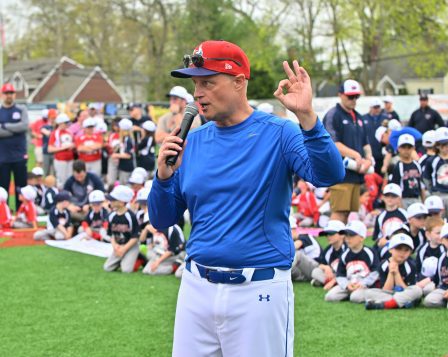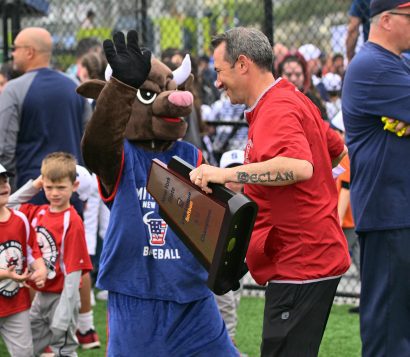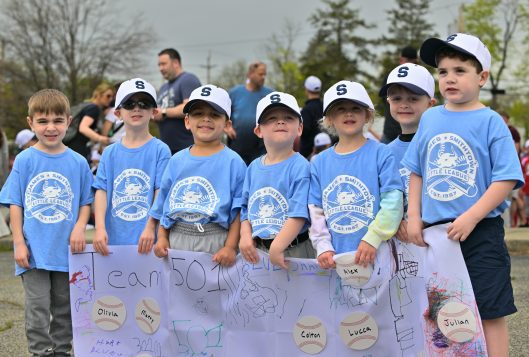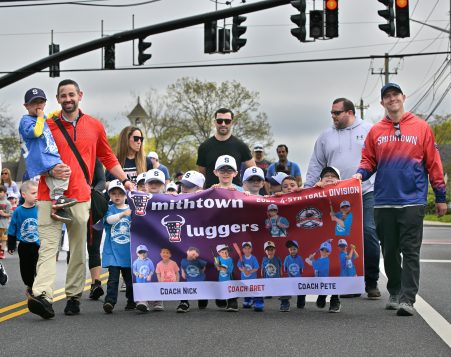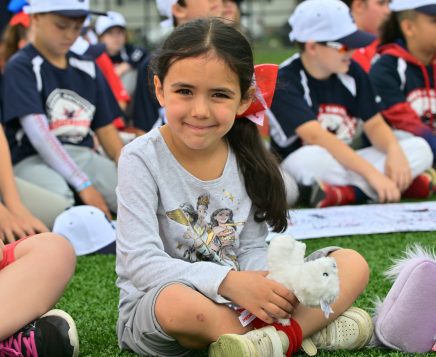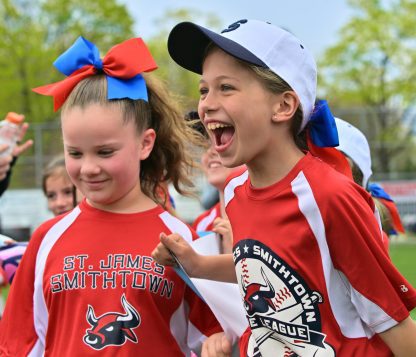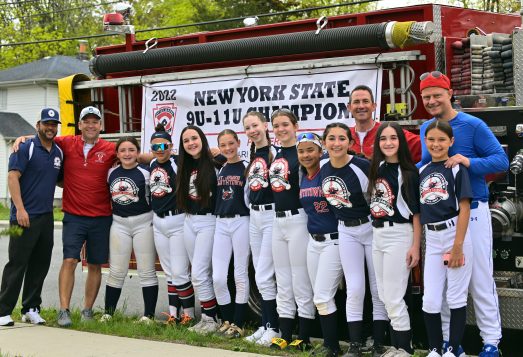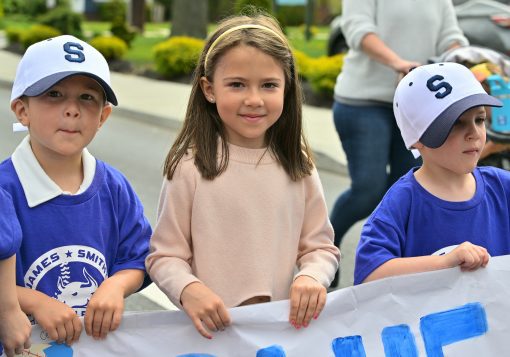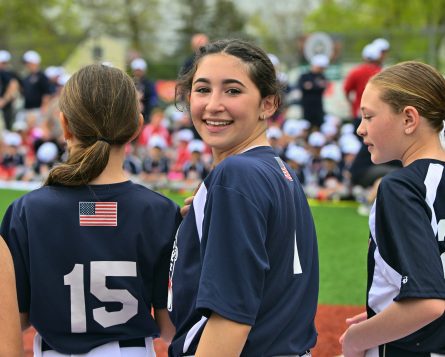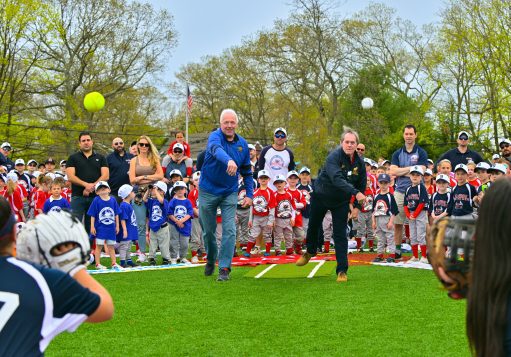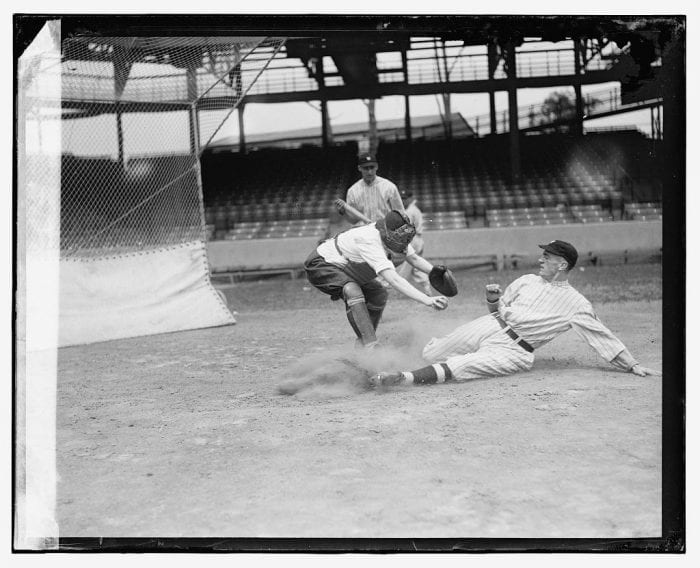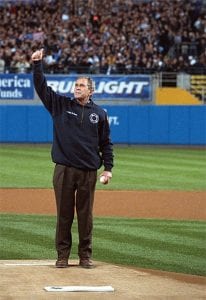All photos by Steven Zaitz
The late Brooklyn Dodger great Jackie Robinson once said that a life is not important except in the impact it has on other lives.
It was only fitting that the St. James-Smithtown Little League Opening Day parade and celebration coincided with Major League Baseball’s annual day of recognition of Robinson.
Over 1,000 players, coaches, parents, and baseball fans marched and lined the sidewalks of Woodlawn Avenue west to Gaynor Park in St. James on Saturday as the league marks its 66th year of little league competition — and the impact of this celebration of baseball’s return to Smithtown could be measured by the smiles of everyone who was there.
The 11 and Under Girls Softball team, who won the New York State Championship in July of 2022, rode in the Fighting Two Fire Engine of the St. James Fire Department, which led the parade west on Woodlawn to the new artificial turf field at Gaynor. The champs were honored lavishly throughout the day. Five hundred other players and coaches followed them, dressed in full uniforms, all carrying decorative team banners with one hand and waving to adoring onlookers with the other.
This trip down Smithown’s version of the Canyon of Heroes was the thrill of a lifetime for the girls.
“The fire truck arrived and one of the firefighters asked the girls to enter, the shocked look on their faces said it all,” said Coach Sean Singh, who piloted the team to glory. “As the fire truck slowly drove along the parade route, they quickly realized that the cheering from friends, family and community was all for them! Having so many people come down to personally congratulate the young ladies was such an honor and their success spoke volumes to the quality of programs Smithtown provides such as our Little League program, along with the opportunities we can provide for our younger athletes.”
Singh’s daughter, Jiselle, plays shortstop for the team.
“Riding in that fire truck was so cool,” Jiselle said. “When I heard the cheering and knew it was for us, I almost cried.”
Tears of joy and laughter were de rigueur on this day, as hot dogs, hamburgers, popcorn and soft drinks were available to all at no cost. League sponsors pitched tents along the foul line of Gaynor Field 3 to ply their wares and dole out raffle tickets, most to kids who didn’t know or care what the prizes were. Two giant, rainbow-colored bouncy houses rollicked behind the centerfield fence, as the rain that had been predicted earlier in the week for this day, exercised a reasonable restraint.
SJSLL Board Member and Co-Softball Coach Peter Russo welcomed the crowd and then league President and Master of Ceremonies Richard Tomitz introduced the girls individually in his customary carnival barker style.
“This is a great day and great celebration of our league, our town and our State Championship girls,” said Tomitz. “It is the first time we are able to have this party on the new turf field here at Gaynor and I’m happy the rain held off and everyone is able to have a wonderful time and stay mostly dry.”
Tomitz then brought Town Supervisor Ed Wehrheim to the podium and he, along with Councilman Tom Lohmann, who played in SJSLL in the late 1960s, threw out the ceremonial first pitch of the season to softballers Gabrielle Krayewski and Riley Connelly. Players and coaches formed a semi-circle around the two politicians as parents and fans cheered from the bleachers.
Wehrheim also gave his congratulatory remarks to the softball champs, the league and spoke glowingly about the project team who helped to complete the turf field. This improvement was the clincher that enabled St. James-Smithtown to acquire the hosting rights to the New York State Championship later in the summer.
“This is an amazing group of girls, and they represented this town with class and excellence,” Wehrheim told the crowd. “This new field surface and improved grounds project was truly a team effort with the league, town hall and the community and is a great example of your tax dollars working for Smithtown.”
Lucas Neems, who is six years old, is not yet focused on a championship, but was nevertheless having the time of his life.
“I loved marching with my new baseball friends,” said Lucas, who plays on Pietro’s Sandlot Scrappers. “I also loved the chocolate ice cream and the pretzels.”
When the ceremony was over and most of the crowd took to the free food, it was time to play ball for a select few. On the main diamond, Singh, Russo, Eric Hanson and Mark Sciortino shared coaching duties for a mixture of girls in blue and red, while minor league boys kicked off the baseball season on Gaynor Field Two. Later on, the 12-year-old boys, the oldest group in the league, played a game on the new turf. This ballgame closed out the party, as sponsors, food vendors and face-painters folded up their tents.
“It was a great time,” Tomitz said. “We had competitive baseball and softball, everybody seemed to have fun, and I’m happy the girls got the recognition and kudos that they deserve. If they win again this year on our home turf, I hope Supervisor Wehrheim gives them one of those giant keys to the city.”
For more photos, visit tbrnewsmedia.com.

